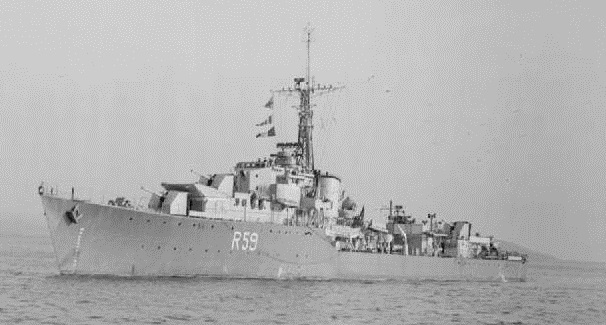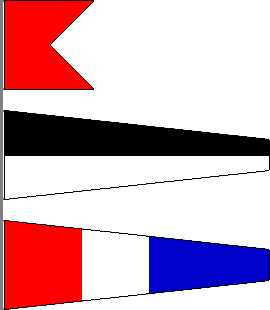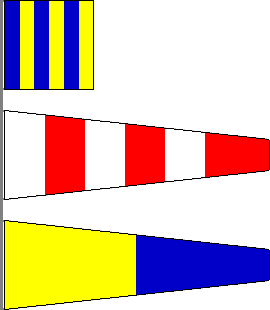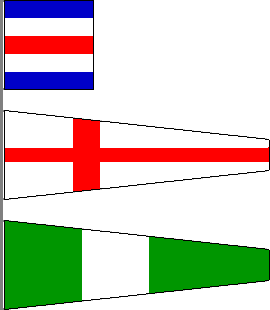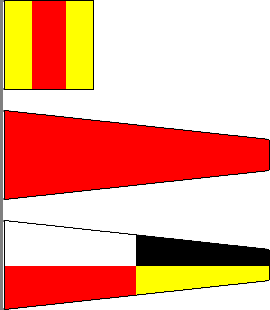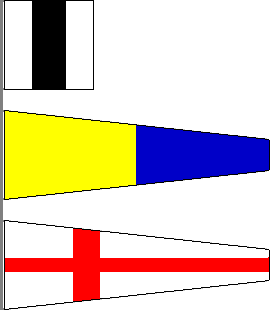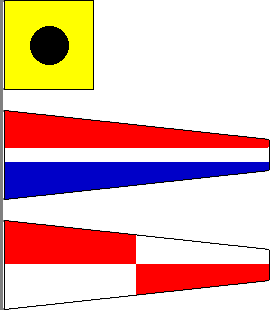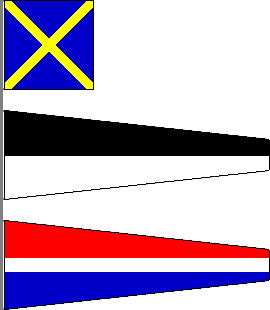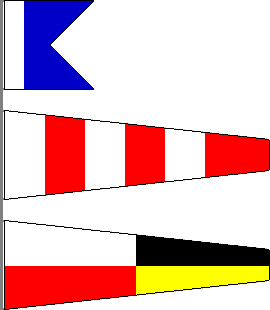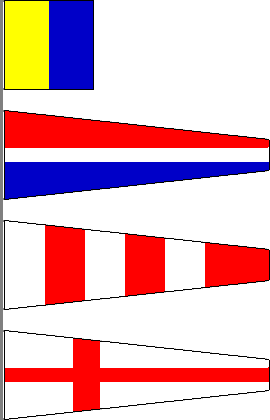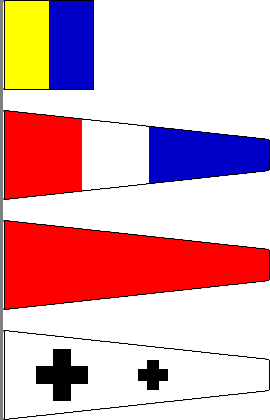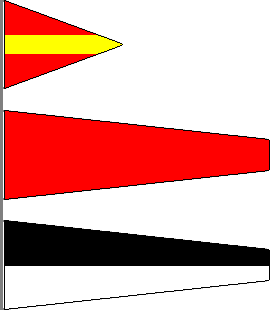Flags have long been
used for signaling at sea, and Britain's Royal Navy was a pioneer in
the development of such visual signal techniques. The ancestor of
today's RN signal flag system was introduced around 1800. Over the
years it was progressively developed and improved, and until the
advent of radio it remained the primary method of communication
between ships at sea. The system in use by the RN by the late
nineteenth century proved definitive, served with only minor
revisions in both world wars and remains in use today. Like the
current International Code, the RN system is based on a set of flags
and pendants (pronounced pennants), each of which denotes a letter,
a number or a special meaning. By hoisting these flags in specified
combinations, signals can quickly be passed from ship to ship.
Signal flags are also
used to show a ship's identity, but since spelling a name like
Prince of Wales would require a complex flag hoist, a numeric or
alphanumeric code is used instead. British warships have been
assigned numbers since the eighteenth century, enabling them to
identify themselves by "making their number" via a signal flag
hoist. As warships became more specialized and different classes
proliferated, the RN elaborated its numbering system by allocating
"flags superior": a letter preceding the ship's number, so called
because it was hoisted above the number pendants. The flag superior
is either rectangular, swallow-tailed (a burgee) or triangular,
while the number pendants are long and tapered. For repeated numbers
a substitute pendant is used (see the illustration below for H22,
HMS Diamond). During World War II the flag superior was
assigned arbitrarily and did not indicate the ship type. After the
war, however, the RN rationalized its pendant number
system so that the flag superior indicated the ship type, e.g. D for
destroyers, F for frigates, etc.
The illustrations below
show all the alphabetical flags and numbered pendants required to
make up a pendant number hoist. Not all flags and pendants of the RN
system are shown, however. The full set included numerical flags (as
opposed to pendants), along with a number of special flags and
pendants such as the Affirmative and Negative flags.
The pendant number
hoists depicted below are based on the allocation of flags superior
after the changes made in mid-1940. Capital ships (battleships,
battlecruisers, aircraft carriers) and the newer classes of cruisers
began the war with two-digit pendant numbers (no flag superior) and
no changes were made subsequently. These ships hoisted their pendant
number under a generic distinguishing flag. Older cruisers such as the "C"
class were allocated flag superior D. Older destroyers had flag
superior G, H or I, while flag superior R was allocated to the War
Emergency classes of destroyers laid down after the commencement of
hostilities. Flag superior U was allocated to escort sloops. Other
escorts (frigates and corvettes) were allocated flag superior K. Due
to the large numbers constructed, many of these ships had
three-digit pendant numbers as shown below. Minelayers were
allocated flag superior M—a rare instance in which the flag superior
indicated the type of vessel. Minesweepers were allotted flag
superior J. Submarines were given pendant numbers
with a flag inferior, e.g. two or three numerals followed by a
letter. In practice, however, submarines rarely if ever flew their
pendant numbers. There were a few other flags superior specified for
minor warships and auxiliary vessels, e.g. T for river gunboats. In cases where the flag
superior was changed, the numbers usually remained the same, e.g.
from D22 to H22. Capital ships and cruisers did not usually have
their pendant number painted on the hull, but destroyers and other
ships usually did. The Commonwealth (Australia, Canada, New Zealand)
navies were included in the RN's pendant number system.
|
